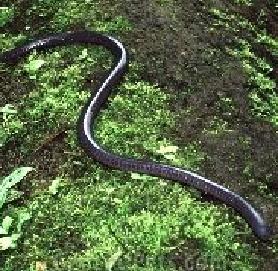Caecilian - Mexican Burrowing
Scientific Name: Dermophis mexicanus
Wed, 30th April, 2025 - 8:19 am GMT
Sponsor Ads:

Alternative Name
Scientific Name: Dermophis mexicanusBasic Info
Caecilians are often mistaken for large earthworms or legless lizards because they have no legs or tails. They are vertebrates and have jaws and teeth like other vertebrates. Caecilians have a very large range of sizes - they appear as small as 7 inches and as large as 4.5 feet, although most Caecilians are around 1 foot in length. The Mexico Burrowing Caecilian grows to between about 1 and 2 feet long. The Caecilian's body has rings of grooves that sometimes have scales, like primitive amphibians. Caecilians have retractable sensory tentacles that extend from grooves on either side of the head that act as eyes, as most Caecilians are nearly sightless. Some Caecilians do not have eyes at all. The Caecilians head is very compact and is useful in digging burrows.
Health
Breeding Caecilians are unique among amphibians in that fertilization is usually internal. Young Caecilians are capable of feeding on the mother's uterus prior to birth because of special teeth, which they loose after birth.Habitat
They are found in most tropical regions of the world, although humans rarely see them because they spend most of their time underground.Behavior
The Caecilian is a very unique amphibian most closely related to salamanders. There are over 150 species of Caecilians in existence. Caecilians feed primarily on small invertebrates, including termites and earthworms. Some species of Caecilians are aquatic and spend all their time in water. Like earthworms, Caecilians sometimes venture out of their burrows in very rainy weather. The Caecilian is one of the most primitive types of amphibians still living today. They are more closely related to vertebrates of 400 million years ago than to any salamanders or other amphibians living today.Origin
Central America and MexicoHistory
Resembling an earthworm in appearance, the Caecilian makes its home in swampy areas in tropical regions.Common Foods
They are burrowing animals and spend most of their time underground, although they will sometimes venture above ground to feed. eat a variety of insectsSponsor Ads:
Consistency is the last refuge of the unimaginative. --Oscar Wilde
Caecilian - Mexican Burrowing
Coded by: BGID® | ALL RIGHTS RESERVED Copyright © 2000-2025
Disclaimer | Privacy | Report Errors / Contact | Credits









